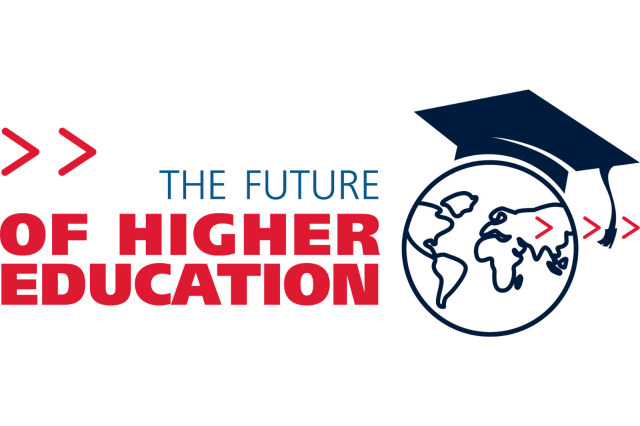
As colleges and universities navigate their survival during the COVID-19 pandemic, they must never lose sight of the needs of their students, their mission, and their individual identities if they want to thrive, a group of panelists determined during a virtual discussion on “The Future of Higher Education” that was recently hosted by St. John’s University.
“You have to be true to what you are as an institution—not veering away from your mission and who you really are—while still baking in much-needed flexibility for your students, because student success always comes first,” said panelist Simon G. Møller, Ph.D., Provost and Vice President for Academic Affairs at St. John’s. “Flexibility is crucial, because once we admit a student, it is our responsibility to make that student successful throughout the career path they have chosen.”
The other members of the panel, which was convened as part of St. John’s 150th anniversary celebration, were Leigh A. Hall, Ph.D., Professor and Wyoming Excellence in Higher Education Endowed Chair in Literacy Education, Literacy Research Center and Clinic, University of Wyoming, and US Army Col. Chris Mayer, Ph.D., Associate Dean for Strategy and Initiatives, United States Military Academy West Point.
Nikhil Yadav, Ph.D., Program Director, Information Technology, and Assistant Professor, Division of Computer Science, Mathematics, and Science, The Lesley H. and William L. Collins College of Professional Studies, served as moderator. Emily D’Alessandro, a senior Childhood Education major in The School of Education at St. John’s, opened the event and introduced the participants.
Noting it is important for colleges and universities to first provide competitive academic programs to attract and retain their students, Dr. Møller said, “Then, you have to move along with the times because things change externally, and you have to adapt to that. I think COVID-19 has put us on a trajectory where we are able to do that. Students are anxious to come back to campus in the fall, we are anxious to be back to normal. There will be opportunities to provide more flexibility for students in how they learn.”
Dr. Mayer said he hopes higher education institutions “will resist the temptation to completely go back to the way things were before the pandemic.” He noted that many of his students and faculty preferred remote, online learning that often replaced the more traditional, in-person classes at the height of the pandemic, because the former was more compatible with their busy schedules.
He acknowledged the “flip side” of off-campus learning. “We have seen many students long for that return to campus and being together with fellow students and faculty.”
“Higher education often gets criticized for being very slow to adapt,” he noted. “The pandemic proved that when it was needed, higher education demonstrated great flexibility in delivering education quickly and in a mostly remote way.”
Dr. Hall predicted that the University of Wyoming will return to the way things were at the school in its pre-COVID-19 days. But she also called for her colleagues in higher education to resist a full return to the in-person teaching method.
“We need to keep in mind, especially as professors, that we must constantly update our skill set and really think about how we should incorporate technology into our teaching, even if it is in a face-to-face class, and how we should use it effectively.”
“I think it’s a challenge,” she said, “but I also think this is an amazing and exciting opportunity to be creative and push the boundaries of what education can look like.”
The pandemic also compelled faculty to reach out and connect more fully with students, said Dr. Hall. “It has helped a lot of educators think about our ability to be compassionate and empathetic, and it pushed us to work harder at building relationships with our students.”
Dr. Møller agreed with that assessment.
“Our faculty have been reaching out to students, not just regarding academic matters, but to show that we care,” he said. “They ask students, ‘How are you doing?’ ‘How is your family?’ ‘Can I help you with anything?’”
“These conversations have bubbled to the surface,” explained Dr. Møller, “and I hope and pray that we will keep these conversations going as we move into our new normal state.”
